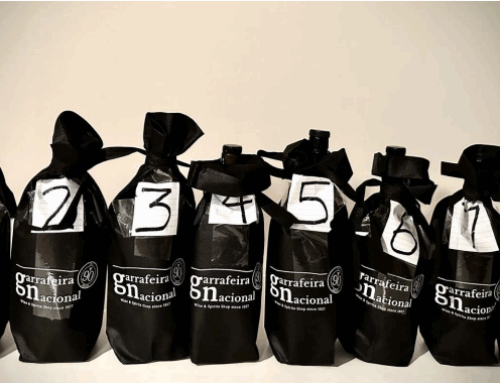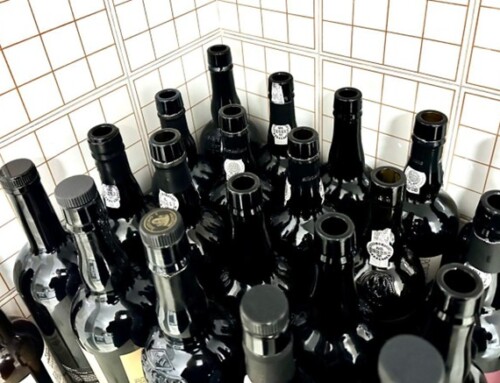It had been six weeks since I departed the Douro at the end of the Port Explorer's Tour in mid-late April. There was just enough time to catch up and reengage with my family, get another newsletter written and published, organize several days worth of Port events during Dirk Niepoort's visit and also complete the necessary logistics for the upcoming Fortification Tour.
After several days of cavorting with friends and attending to a few business appointments before our tour began, yesterday was the official beginning of our excursion and it was a mighty impressive afternoon at Wiese & Krohn followed by a great dinner at O'Paparico.
I am sitting onboard a train from Porto heading up to the Douro at the moment. It was nice to see that the majority of the azulejo restoration project in São Bento station has been completed, no more scaffolds blocking the extraordinary tile work. As I sit here and reflect upon the scenery as the train meanders its way up river, I think back to my very first train ride eighteen years ago in a much slower and more rustic railroad car.
Back then the trains were much slower and far less comfortable and I remember people hanging out in between the railroad cars, standing for the duration of the trip, open to the elements and fresh air. Some smoked non-stop. But in the cars themselves the windows opened from the top down and nearly waist high when standing up. Now the windows are fixed and there is air-conditioning. Back in the day, the train seemingly stopped at every small village and never reached the speeds at which we are traveling today.
It has been several years since we took the train up river beginning in Porto and winding up in either Regua or Pinhão. We typically drive up the modern highway in our minivan and in some ways, we simply forego the experience of traveling on one of Europe's most scenic rail routes for the sake of expedience. I must admit that I've missed that nostalgic ride and wanted to experience it again. I felt that our guests would get a real kick out of traveling this historic route and modus of transport that connected the big city to the of the land of the demarcated region and home to the Duriense.
I remember my fascination on that very early train ride when I noted the rustic countryside outside of Porto proper. And about an hour later, vineyards appeared. Everywhere. As far as the eye could see along with the site of the glorious river Douro, just a few meters away from the edge of the tracks. The view was awe inspiring, as I had only seen pictures in the dozens of books I had voraciously consumed in the late 1980's and early 1990's.
My Middle Eastern girlfriend joined me for this adventure, and having traveled extensively she was used to riding trains traversing Europe. For me, it was different. This was my first time visiting the continent, no less Portugal. We had spent a week in Lisboa prior to arriving in Porto. I loved being in the capital city and surrounding areas of Setubal, Palmela and other coastal villages slowly making our way up to Porto.
The train ride up to Porto was enjoyable, but it did not compare to the vistas alongside the Douro that we experienced a couple of weeks later. The majestic steeply terraced vineyards were a sight to behold and I wondered how people could possibly work in those vineyards, pruning, planting, grafting, picking and carrying the grapes throughout each year's growing cycle, and later carrying the pipes of freshly fortified Port down to the quay by ox cart.
Even now, looking at the tame Douro, I envisioned what it must have been like back before the dams were put in place in the early 1960's and the Barco Rabelos bravely made there way through the perilous rapids. Times have certainly changed, but the topography and beauty of the Douro remains; and in that way, time stands still.






Leave A Comment
You must be logged in to post a comment.